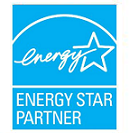


| What is "Water Conditioning"? |
Water Conditioning |
||
| Water conditioning can be described as "virtually any form of
water treatment designed to improve the aesthetic quality of water by
the neutralization, inhibition or removal of undesirable substances".
Traditionally, various types of water treatment equipment have most often employed chemical interactions to obtain a predetermined result. Chemical reactions are quite well understood, and the outcome is typically very predictable. The problem with chemical water treatment is usually that there are some, if not many, negative side effects to take into consideration. The negative side effects can often outweigh the positive results achieved, from an environmental point of view. Physical water conditioning does not incur the negative side effects associated with most chemical treatments. The problem with physical water treatment has historically been dependability and consistency of the treatment. Because so little is actually understood about physical interactions, most PWT vendors have been unable to properly specify their products for various applications. If a manufacturer (or distributor) doesn't fully understand the principles and dynamics of a system, how is it possible to properly specify a solution? Most of the time it has been a "try and see if it works" approach for these types of products. The majority of these products are various types of magnets, electric coils, etc. Most all of these have had a limited success ratio for this reason. HydroFLOW is a physical water conditioner which eliminates the problems associated with proper specification of correct units for specific water conditioning applications. Specification has been inherently incorporated into the unit design by correctly sizing the power output and signal dynamics of the units for each specific application the unit is intended for. With a HydroFLOW unit being properly installed, success is assured. As for "proper installation", there can be a little more to it than first meets the eye. This is why we typically like to work closely with our clients to insure a proper installation. Location is key. In each application, there are good locations, and bad locations. Then, there is what you might call "the sweet spot" where the water conditioning unit will operate at maximum efficiency. Because the Hydropath unit is ELECTRICAL in nature (not magnetic), one must think of the plumbing system as an electrical circuit. The best location for maximum efficiency would be somewhere near the "center" of the system, because the signal is propagated both upstream and downstream of the unit itself. Because an electrical signal divides at each branch of the plumbing system, (the actual voltage divide is determined by the impedance of each branch) some thought must go into placement for best results, even though the unit might actually work perfectly well placed in many various locations within the system. Problems arise when the unit is placed in what can be considered an electrical loop. When placed in a loop, the signal is unable to propagate throughout the system, but instead circles around a small sub-section of the plumbing system. If placed in a loop, failure is assured. Loops can often times be not so obvious to the eye. Keep in mind that when we are speaking of loops, we can be referring to either:
In the case of hardware loops, this can be caused by the brackets, pipe hangers, grounding straps, etc., attached to a metallic pipe. A good example of a hardware type loop would be a case of metal piping supported with metal hangers, suspended from a metal beam. Referring to diagram 1 below, the red line indicates the low-impedance path the signal will take which creates a loop around the unit. Note: If a beam (or rebar) is a part of a concrete inner-structure, you may not even be aware that it is there creating the loop.
A good example of a fluid system loop would be if the unit is placed within a parallel section of a pumping & filtration system. Referring to diagram 2 below, the red line indicates the low-impedance path the signal will take which creates a loop around the unit. Notice that the signal strength may be diminished by the pump and filter components, however the loop will create an undesired condition. It can be considered the same as if the pumps and filters were not in the system. This type of loop is much more evident, and should be easily observed by looking at the piping configuration itself. This same type of loop can occur if the unit is placed near a meter which has a bypass loop, even when the valves are closed. (the signal will pass straight through metallic valves!)
Note: Either of the above two examples could be easily corrected by properly placing the Hydropath unit upstream of the loop.
As you can see, we MUST avoid loops in any case when installing Hydropath units! As long as the unit is not placed within a loop, some level of success is assured. Best placement can only be achieved through a comprehensive review of the entire system to be treated. When we work with our clients for treating specific applications, they can always be assured that the Hydropath units will be properly installed for maximum results. If the units are to be installed yourself, please be willing to allow us to provide advice and assistance for proper placement. This may involve sending us photographs of the installation, and close communication with us to ensure a successful application.
|
Copyright © 2003-2009 ECMI

